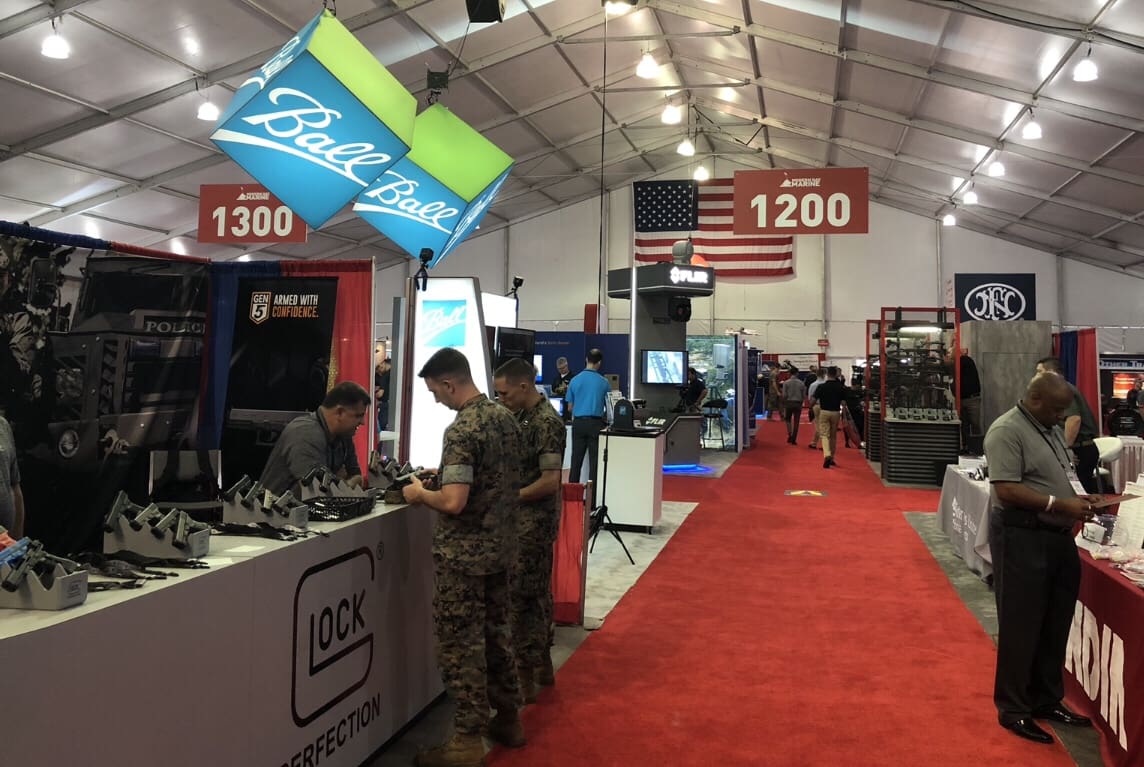
The 2018 Modern Day Marine Exposition kicked off to a very wet morning. We’re looking forward to seeing the latest industry has to offer.

The 2018 Modern Day Marine Exposition kicked off to a very wet morning. We’re looking forward to seeing the latest industry has to offer.
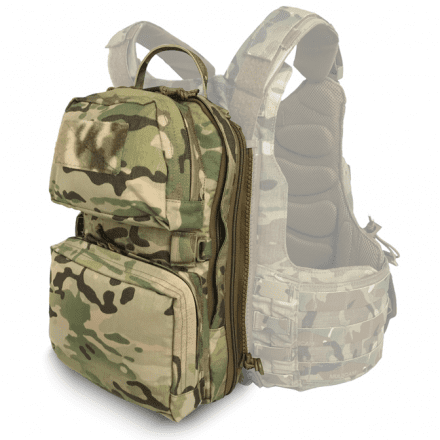
The Huron™ Collapsible Direct Action Assaulters Pack – MV (HRN-DAAP-MV) attaches to all TYR Tactical® Plate Carriers with 11” back panel zippers. This attachment system allows for a quick disconnect and reconnect of the pack to your carrier. The DAAP-MV may also be utilized as a Stand-Alone Pack with its two low profile shoulder straps. The shoulder straps can be removed or remain on the pack when attached to the carrier, this allows the user to remove the pack from their carrier and then quickly don the pack again via the shoulder carry straps. The DAAP-MV can carry hydration, a 117-G Radio and/or other equipment for various mission sets. It also features a zippered expandable main compartment that has two antenna/cable routing ports, an internal hydration pocket with top hydration port, two external general purpose pockets and a removable beavertail for storing a helmet or transitional garments.
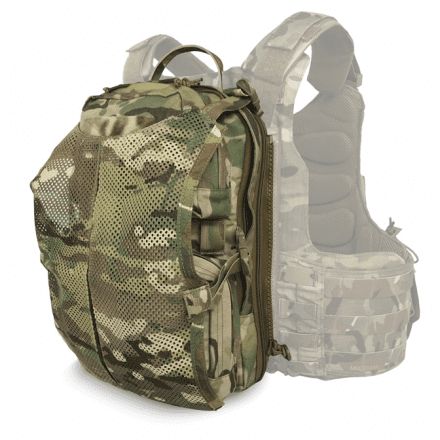
The DAAP-MV can also be attached to other plate carrier brands by purchasing the TYR Tactical® 11″ Zipper Adapters (SOLD SEPARATELY). The TYR-AZPR001 MOLLE to the back of any plate carrier or vest that has 1 column/6 rows of MOLLE webbing.
Wt: 1.55 lbs.
Dim: 13.25” H x 9.25” W x 3” or 5”D
Cubic Liters: 8.86L – 12.88L (Collapsible Main Compartment & Two GP Pockets)
Design Features:
• 500d Cordura®
• Collapsible Main Compartment from 5” to 3”
• Top Loading
• Carry Handle
• Qty.1 Tapered GP Pocket 4.75”H x 7.50”W x 2”D
• Qty.1 Padded Bottom GP Pocket 6”H 8.50”W x 2”D
• Removable Poly Mesh Beavertail
• Attaches to all TYR Tactical® Plate Carriers with 11” back panel zippers
• Removable Yoke/Shoulder Straps
• Hydration Pocket

ABERDEEN, N.C. – (September 2018)- Proven Arms & Outfitters, formerly Quantico Tactical is proud to announce the First Tactical V2 Challenge on September 29th, 2018 at the Tacoma, WA and Woodbridge, VA locations. The event falls on a weekend-long First Tactical Days celebration, the 28th – 30th of September, where customers can save 20% Off their entire First Tactical purchase. First Tactical, the newest (and oldest) innovator of tactical gear and apparel, and Proven Arms & Outfitters celebrate the launch of their new V2 Tactical Pants. The V2 Series is the long-awaited byproduct of market demands for a superior pant that boasts advanced features and functionality while being provided at a competitive price. Proven Arms & Outfitters standard is to offer consumers excellent product selection while allowing for budget-friendly, quality options.
Proven Arms & Outfitters locations are currently operating under the Quantico Tactical signage, as they are still in transition from the former name. Proven Arms & Outfitters wants to remind consumers that they are the same great company that has served them for years.
Please stop by the store on September 29th for an onsite event and be the first to try the V2 Tactical Pant. Product Designers and subject matter experts will be on hand to demonstrate the V2 product line and answer questions, and a live wear test for those who wish to participate. All public safety community members are encouraged to visit Proven Arms & Outfitters (formerly Quantico Tactical) to explore First Tactical’s complete line of men’s and women’s apparel and gear.
Proven Arms & Outfitters and First Tactical believe in these pants so much they will be handing out prizes for merely trying them on. Join their teams for a great day of festivities including hourly raffles, door prizes, product demos and more! Everyone purchasing an item will receive a free limited edition First Tactical patch. Proven Arms & Outfitters and First Tactical are honored to serve law enforcement, firefighter, EMS, and Military professionals. Proven Arms & Outfitters retail locations provide local professionals and enthusiasts with exceptional hands-on service.
Stay tuned and look forward to more exciting announcements coming from Proven Arms & Outfitters very soon!
About Proven Arms & Outfitters:
Proven Arms & Outfitters is a leading supplier of apparel, gear, and firearms to Enthusiasts, Law Enforcement, First Responders, and Military professionals. We have the PROVEN selection of products designed to help you perform at your peak. For a complete and current outfit for your weapon, build out existing kit, or gear up for your next adventure, choose us for our practical knowledge, experience, extensive selection, and exceptional customer service. Proven Arms and Outfitters is formerly Quantico Tactical. This change comes after 14 years of operating under the Quantico name. A name that has long served the surrounding communities with the latest in firearms, gear, and apparel to military personnel, federal agencies, law enforcement, and tactical enthusiasts. After much reflection, it was decided that to serve its customers better it would be best to separate the company into two separate entities, one focused on retail sales and the other on government sales. Quantico Tactical will now focus solely on sales and logistics to the military, federal agencies, state/local law enforcement agencies and private security from their headquarters location in Aberdeen, NC. Proven Arms & Outfitters will focus on retails sales to the public.
Visit one of our two Proven Arms & Outfitters locations, find us on the web at www.ProvenOutfitters.com, and follow us on Facebook, Instagram, and Twitter.
About First Tactical
Headquartered in Modesto, California, First Tactical™ makes functional gear created for professionals. Guided by the principles of innovation and reliability, First Tactical works firsthand with Law Enforcement, Firefighters, and Emergency Medical Personnel to create durable products that meet the needs of public safety. By working directly with real-world users and utilizing the expertise of high-quality professionals, all of First Tactical’s products are put through demanding conditions to ensure they are can reliably perform. Learn more about First Tactical’s clothing, Advanced Women’s Fit, outerwear, accessories and what’s to come at www.FirstTactical.com.
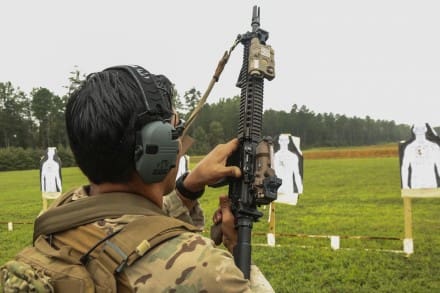
Asymmetric Warfare Group members conduct multiple pistol and rifle drills form different firing positions to transitioning from rifle to pistol as part of the Operational Advisor Training Course (OATC) at Fort A.P. Hill, Va., Sept. 11-13, 2018. The drills they were conducting were designed to: Improve accuracy and efficiency under stressful situations while transitioning from a rifle to a pistol.
OATC is designed to train and prepare Operational Advisors (AOs) for the Group’s global mission to provide operational advisory support to U.S. Army Forces in order to rapidly transfer relevant observations and solutions to the tactical, and operational point of need, to prepare Army Commanders to defeat emerging asymmetric threats and enhance multi-domain effectiveness.
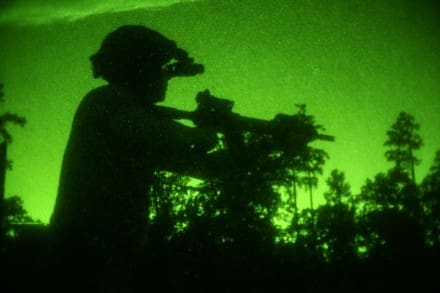
In a Sources Sought Notice published on 24 September, 2018 by Product Lead, Ground Mobility Vehicles (PL GMV), they are conducting a market survey for new production of an Infantry Squad Vehicle (ISV).
According to the notice, the ISV will provide mobility for a 9-soldier infantry squad with associated equipment to move around the close battle area. The ISV is a lightweight, high mobility platform that shall be transportable by all means including vertical lift (via CH47 and UH60) and Low Velocity Air Drop (LVAD).
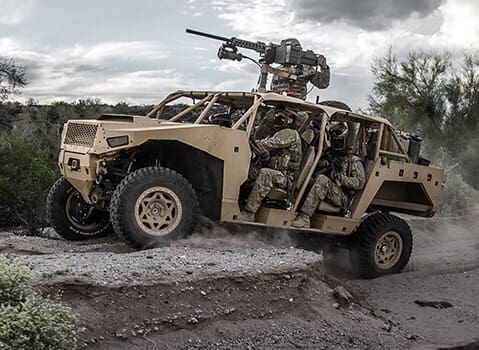
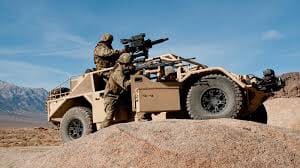
Additional requirements include:
Physical Characteristics: Platform characteristics will be heavily influenced by mobility, payload and by the vertical lift characteristics of the UH60 and internal transport dimensions of the CH47 as defined in MIL-HDBK-1791 and MIL-STD-1366. For purposes of this questionnaire, the ISV shall meet its transportability and aerial delivery requirements at Vehicle Curb Weight (VCW) defined as an empty vehicle with Basic Issue Items (BII), a ¾ complement of fuel, lubricants, coolant, and hydraulic fluid (as applicable). Based on current research and requirements for UH-60 Sling Load capabilities the VCW at a maximum must be 4,800 lbs. Gross Vehicle Weight (GVW) will apply to all other weight requirements. GVW is defined as VCW plus operational payload of Soldiers and their associated equipment and supplies. The GVW will be the VCW with a nine soldier payload (i.e. 3200lbs). The Gross Vehicle Weight Rating (GVWR) will be the VCW plus maximum designed payload.
Military Specific Modifications: Blackout Lights, weapon mounts, Chemical Agent Resistant Coating (CARC) paint, 24V electrical, MIL-STD-814/MIL-STD-209K provisions, North Atlantic Treaty Organization (NATO) Slave and Military Petroleum, Oils and Lubricants (POL)
Mobility: The ISV shall be a vehicle capable of traversing longitudinal grades up to 60%. The ISV shall be capable of meeting the mobility requirements from VCW to GVW on the following terrain profiles:
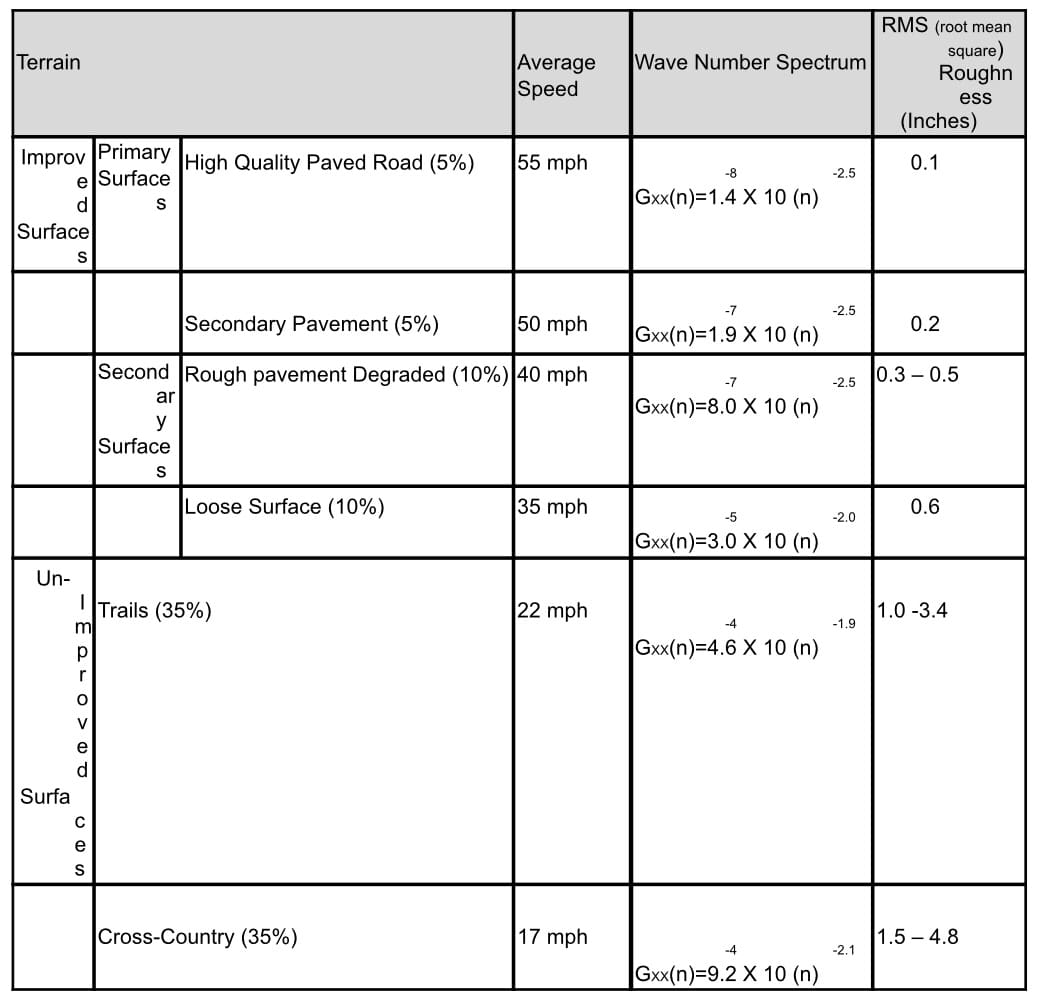
Survivability: The ISV is envisioned as a lightweight, highly mobile open cab vehicle. Survivability will be achieved through high mobility, a roll cage and occupant restraints.
Transportability: The ISV shall be transportable by the following means: C-17/C-130 airdrop including C-17 Dual Row Airdrop System (DRAS), C-17/C-130 internal transport in roll-on/roll-off (RORO) configuration, CH-47 internal transport, CH-47/UH-60 external transport, rail and sea.
Environmental: The ISV shall be capable of operating in Hot/Basic/Cold as defined in Army Regulation (AR)-38. The ISV shall be capable of saltwater/freshwater fording and operating in adverse environmental conditions as defined in MIL-STD-810 (e.g. blowing rain, blowing dust, salt fog, etc.).
The total number of vehicles is 2,065, procuring 100 per year, beginning in 2020.
Any potential solicitation (and resulting contract) would acquire Government Purpose Rights to associated technical data, logistical and test support, installation kits and ancillary hardware with the vehicles. The ancillary hardware includes, but is not limited to, Basic Issue Items (BII), special tools, new specialty kits, expeditionary field kits, initial support items, self-recovery winch kits, and extended draw bars.
Responses are required by Oct 26, 2018 5:00 pm Eastern. Visit www.fbo.gov for full details.
[Arlington, TX, 9/24/18] Imminent Threat Solutions is proud to introduce the OSS Tradecraft Toolset, an ultra-concealable and fully-capable covert device, reminiscent of those utilized by America’s WWII intelligence agency. It measures only 2.25” long and features five of the most effective entry/escape tools.

Removing the OSS from its half-length rubber storage sheath allows for rapid deployment of the toolset. Being bound by a rivet enables a quick selection of either the City Rake, Bogota® Triple Rake, Long Reach Hook or Escape Saw to pair with the included tensioner.
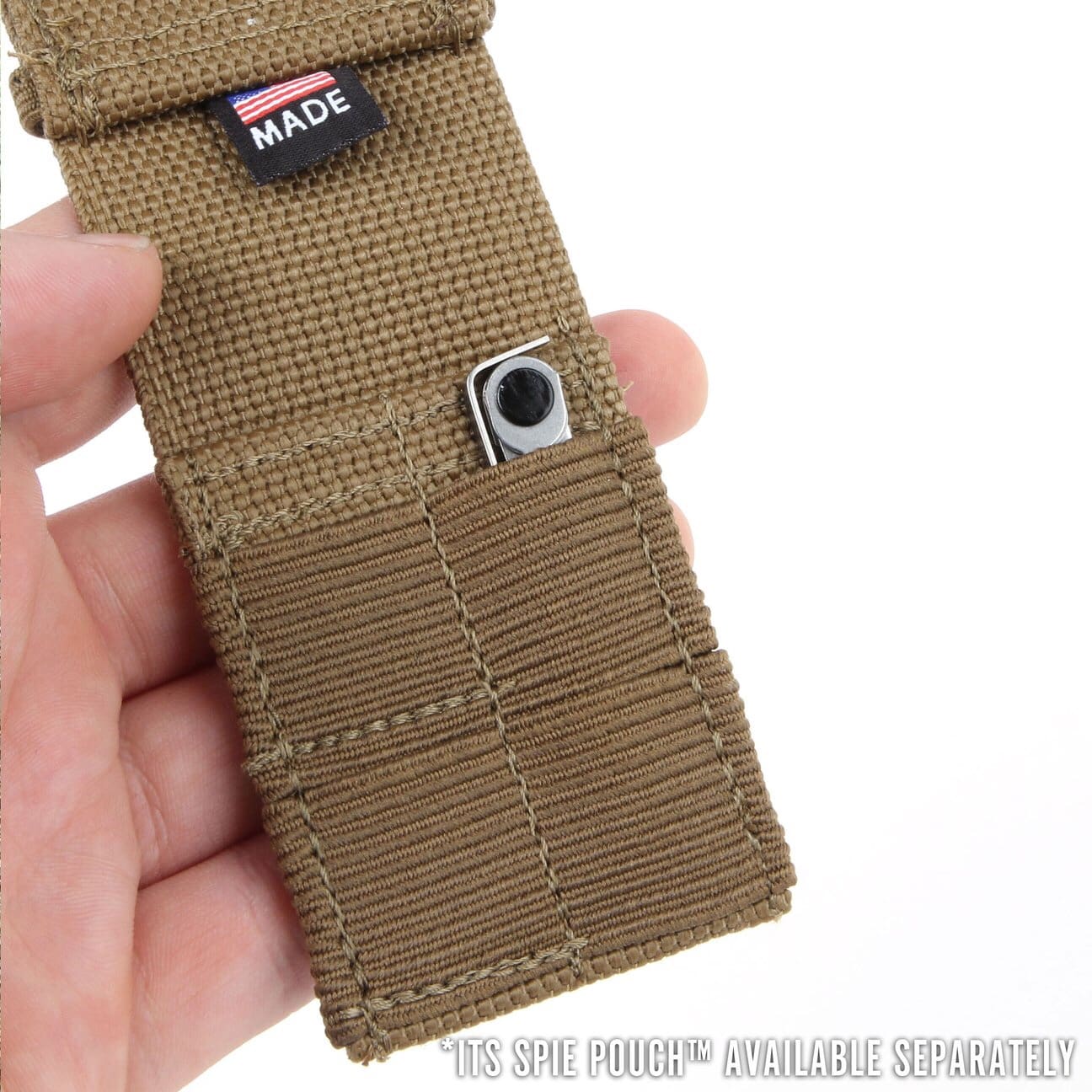
Imminent Threat Solutions provides indispensable skill-sets and products to explore your world and prevail against all threats.
For more information on ITS Security products, please visit store.itstactical.com/collections/security.
This is the sixth installment of ‘Max Talk Monday’ which shares select episodes from a series of instructional videos. Max Velocity Tactical (MVT) has established a reputation on the leading edge of tactical live fire and force on force training. MVT is dedicated to developing and training tactical excellence at the individual and team level.
An instructional session buddy pair fire and movement (assault), including a live fire demo. This is a follow up to the ‘Why the Lone Wolf Operator will Die’ Max Talk Videos, designed to show the advantages of the correct application of fire and movement at the basic building-block of a two-man buddy pair. This video is followed in series by a buddy pair break contact demonstration.
Max is a tactical trainer and author, a lifelong professional soldier with extensive military experience. He served with British Special Operations Forces, both enlisted and as a commissioned officer; a graduate of the Royal Military Academy Sandhurst. Max served on numerous operational deployments, and also served as a recruit instructor. Max spent five years serving as a paramilitary contractor in both Iraq and Afghanistan; the latter two years working for the British Government in Helmand Province, Afghanistan.
Website: Max Velocity Tactical
YouTube: Max Velocity Tactical
WASHINGTON (NNS) — Navy announced updates to uniform policy, grooming standards and the launch of a uniform working group in NAVADMIN 233/18, Sept. 21.
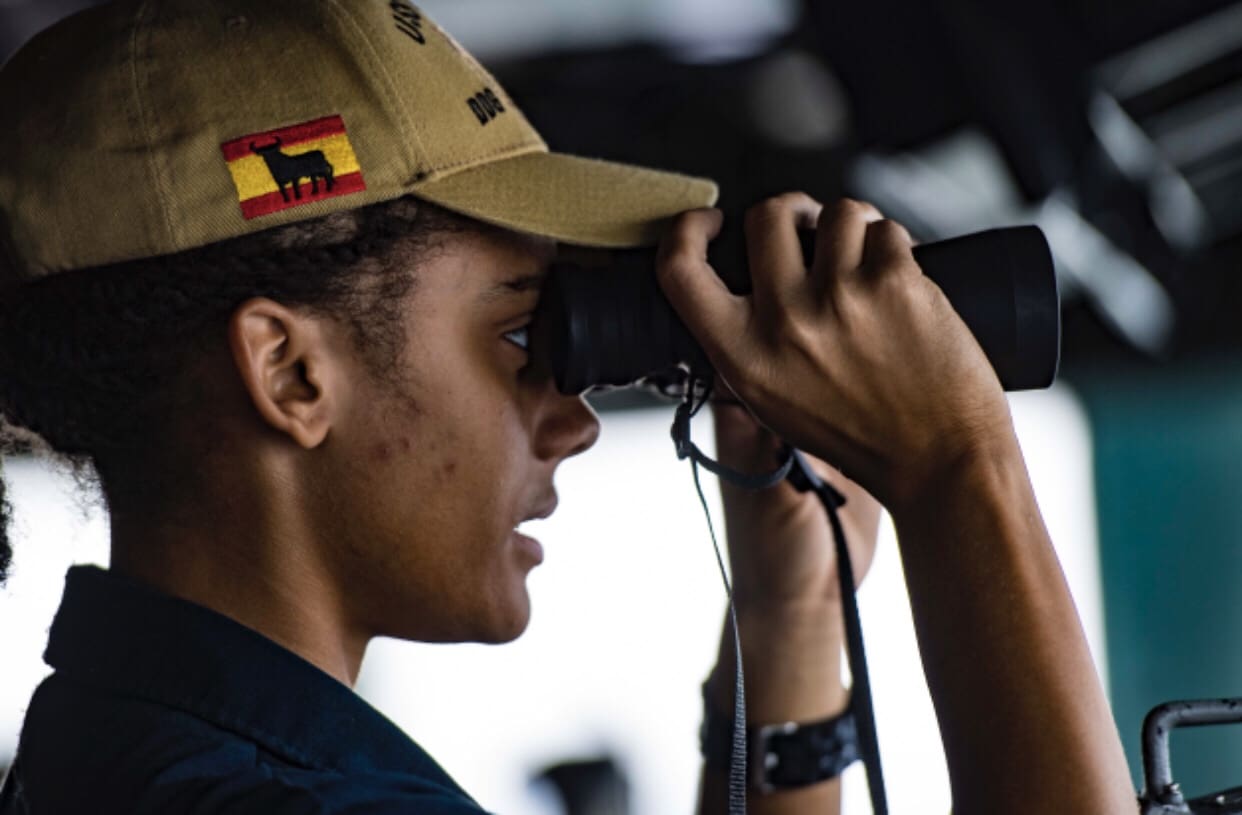
U.S. Navy photo by Mass Communication Specialist 1st Class Ryan U. Kledzik.
Highlights of the changes include:
• Completion of fittings and wear tests for new, improved female officer and chief petty officer slacks and skirts, scheduled to be available for purchase by the end of 2018
• Announcement of the improved general safety boot (I Boot 4) with enhanced comfort and durability features, expected to be available for purchase in October 2018
• Commanding officer’s (CO) approval for the wear of coyote brown ball cap with coveralls and flight suits
• CO authorization of command logos on t-shirts worn with Navy Working Uniform (NWU) Type I, II and III, coveralls and flight suits
• Fingernail grooming standards for men and women, including guidance on length, shape and color of nails
• Lock hairstyle standards for wear, size, length and guidance for wear in uniform
• Wear guidance and changes to the allowed material for rings and bracelets
• Announcement for Sailors assigned to Marine Corps units, who must now abide by Marine Corps grooming standards when wearing Marine Corps uniforms
• Authorization and wear guidance for the optional simultaneous wear of the Post-Tour Command at Sea and Command Ashore/Project Manager insignia
Navy has launched a uniform policy working group to provide a forum for direct Fleet feedback on uniform wear and regulations. Commands interested in having a crew member participate in a future working group can submit a command endorsed request with the name, rank, rate and availability of the Sailor to the “Ask The Chiefs” email list at umo_cmc@navy.mil.
Sailors can provide feedback and recommendations on Navy uniforms and the Navy Uniform App at any time via the “Ask The Chiefs” email, on the Navy Uniform Matters Office website at www.npc.navy.mil, or a link available on the Uniform App.
Read NAVADMIN 233/18 in its entirety for details and complete information on all of the announced uniform changes, updates and guidelines at www.npc.navy.mil.
Get more information about the Navy from US Navy facebook or twitter.
For more news from Chief of Naval Personnel, visit www.navy.mil/local/cnp/.
From Chief of Naval Personnel Public Affairs
Editor’s Note: The message is available here.